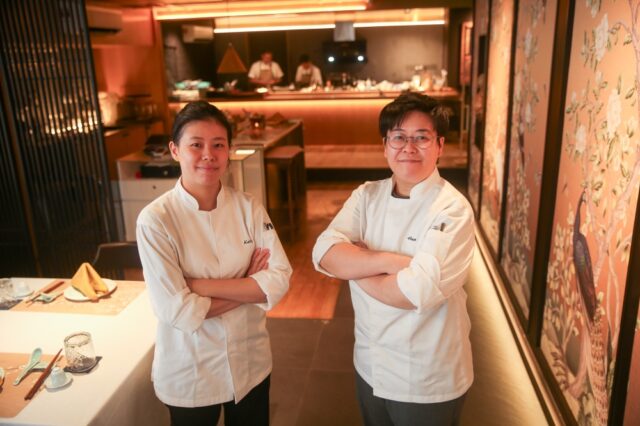KUALA LUMPUR, May 18 — “It is, at its core, a Chinese restaurant, but one that borrows freely from the chefs (sic) many experiences… There is no dogma here, no rigid adherence to an imagined past. And in that way, it feels true.”
In February, just five months after Restaurant Jie opened, Darren Teoh, chef-patron of two-Michelin-starred Dewakan, featured it in a long, occasionally meandering Instagram post reflecting on authenticity in cooking.
Teoh’s post, part rumination on authenticity and part unexpected endorsement, thrust the then-largely unheard-of restaurant, the latest venture from the Tinkermen Collective, into the sights of KL’s fine-dining circles.
“We’re full tonight,” said Wong. “Actually, we’ve been pretty busy lately — fully booked most nights.”
Wong Yin How, founder of the Tinkermen Collective, was standing in the middle of Jie’s dining room.
The serial restaurateur had popped in to check on things before rushing off to one of Tinkermen’s 16 other outlets.
The Japanese yellowtail dish being plated. — Picture by Choo Choy May
At the kitchen counter, chefs Foong Hew Whye and Chan Min See moved quietly through the final stages of plating the Japanese yellowtail dish.
It’s a refined, deliberate composition: a short, circular mound of yellowtail tartare sits at the bottom of the plate, flecked with fine bits of mint, pineapple, chilli and onion — the classic garnishes of asam laksa — along with the juicy flesh of Tambun pomelo.
An intricate tuile separates the tartare from a dollop of caviar, meant to be broken off and eaten in composed bites.
Visually, the dish is an evolution of a salmon and pomelo number from their first menu, a riff on Chinese New Year yee sang. But here, the inspiration is firmly asam laksa, says Foong.
“The condiments in asam laksa are very refreshing, very green and aromatic,” she said. “But I thought the soup would be a little boring for the customer. So I modified it into a tartare, making it a refreshing start for the customer.”
Foong, 37, is the head chef at Jie. She’s joined by senior sous chef Chan, who has worked with her for close to a decade, ever since they met on the opening team at Nobu Kuala Lumpur.
Chan, now 32, later left for the three-Michelin-starred Robuchon au Dôme in Macau — an institution perched at the top of the Grand Lisboa Hotel, as much a temple to haute cuisine as it is to opulence.
Foong followed her three months later.
“It was very stressful. We worked more than 14 hours a day, and sometimes we wouldn’t get a break for almost three months,” Chan recalled, her eyes carrying a look of haunting admiration.
“Staff turnover was very high. But it was my first time seeing and handling a lot of new ingredients from France and Japan.”
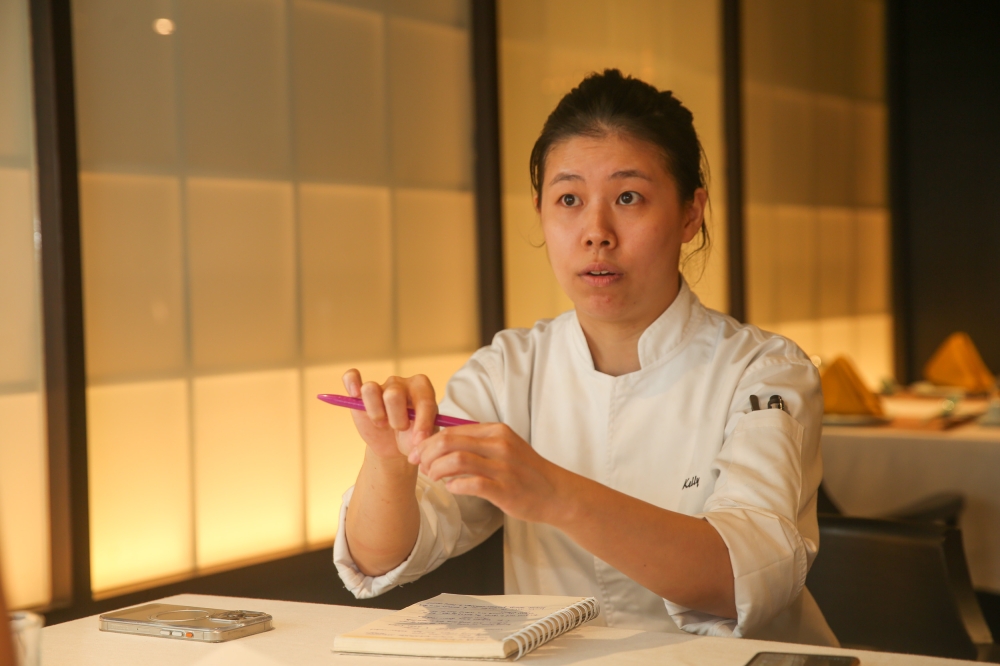
Chan, 32, was the first of the two to work at Robuchon au Dôme in Macau. — Picture by Choo Choy May
Foong reflects on her time there a little differently.
“It was a totally different experience (from Nobu). Robuchon has a lot more discipline involved — it’s very traditional, very classic,” she said. “
But I found the classic dishes to be the most innovative, like the tomato mille-feuille and lobster gelée. Robuchon came up with the mille-feuille dish like 10 or 15 years before then, when there was no internet to do any research, and everything came from his own mind. I think it’s incredible, and I think he’s a legend.”
Chan also recalls a dish that blew her mind at the time.
“The Saint-Jacques — it’s a type of scallop — and spaghetti dish. They use the spaghetti to create a dome — that was insane!
“No adhesives, just the starch of the spaghetti and your skill in getting it to stick. And we had to do it for a gala dinner, three days straight.”
After four years of honing their craft in that exacting environment, Foong and Chan decided it was time to bring their refined skills back home.
In 2019, they returned to Malaysia, settling in Foong’s hometown of Ipoh, where they opened Communal Kitchen & Bar, a casual restaurant-café-bar, just a month before the pandemic hit.
The venture was short-lived, but fate intervened. A chance encounter a year later with one of Wong’s restaurant managers would set the stage for their return to KL.
Foong had interned at one of Wong’s restaurants early in her career. While on a trip to KL, she bumped into Becky — now the manager at Jie — who mentioned that Wong was looking for someone to lead a new restaurant.
“They came to Ipoh and tried the food, and he said we needed a larger market instead of staying in Ipoh,” she said. “Otherwise, it would be a waste of what we learned in Robuchon.”
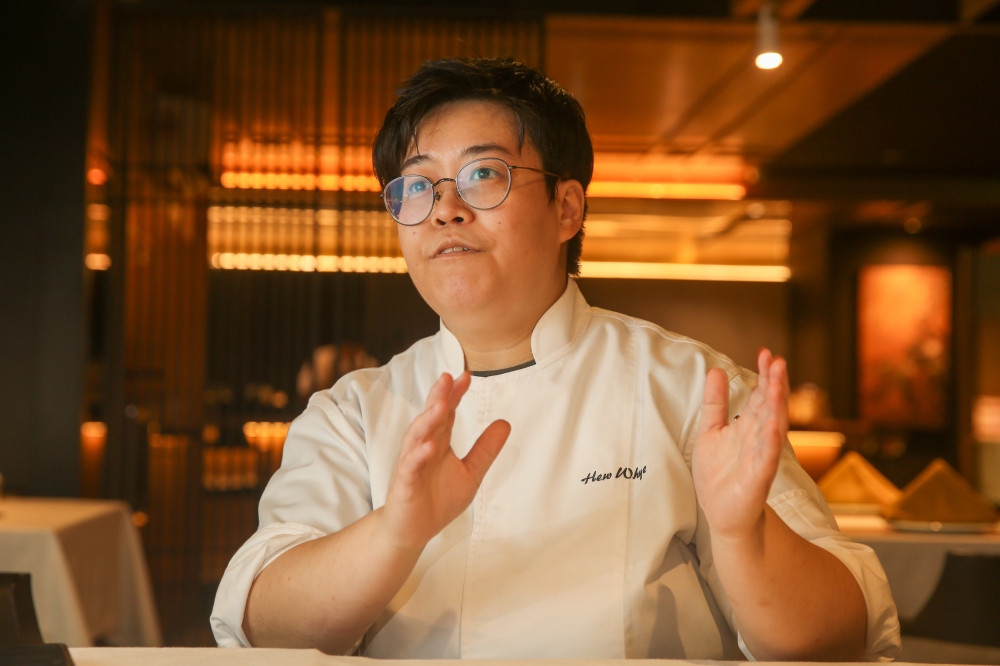
One of Foong’s first jobs was interning for restaurateur Wong Yin How, and by chance in 2021, their paths crossed again. — Picture by Choo Choy May
In 2022, Quin opened in The Five, Bukit Damansara, with Foong and Chan at the helm.
Styled as a modern French restaurant, it was the ideal platform for the duo’s training and precision to shine. But what they really yearned for was much closer to home, even if the spark came from somewhere else.
“After being overseas for so many years, we were really craving Malaysian food. We were dying for it,” Chan laughed. “When my mum used to visit me overseas, I would say, ‘Please Mum, when you come, please cook and bring sambal petai udang.’”
The shift came after Wong took the two chefs to WING, chef Vicky Cheng’s critically acclaimed contemporary Chinese fine dining restaurant in Hong Kong. The experience opened a door.
“It was a moment of inspiration for us — why can’t we do something like this in KL? Not Hong Kong Chinese, but Malaysian Chinese cuisine,” Foong said.
“That’s why the first menu featured dishes like chicken wings with glutinous rice, fish curry with red snapper — we keep the soul of the dish, but we try to refine it and present something more elegant.”
It hasn’t been without its challenges. “We question ourselves a lot, because a lot of diners are familiar with Chinese comfort food,” Foong explained.
“They say, ‘What is the value I get from dining here?’ So we pick our minds, working on how we use our European technique and ingredients, and present the food. Like the chicken wing from the previous season, we used foie gras in the filling, representing the yin and yang of Western and Chinese cultures. Everybody liked that dish.”
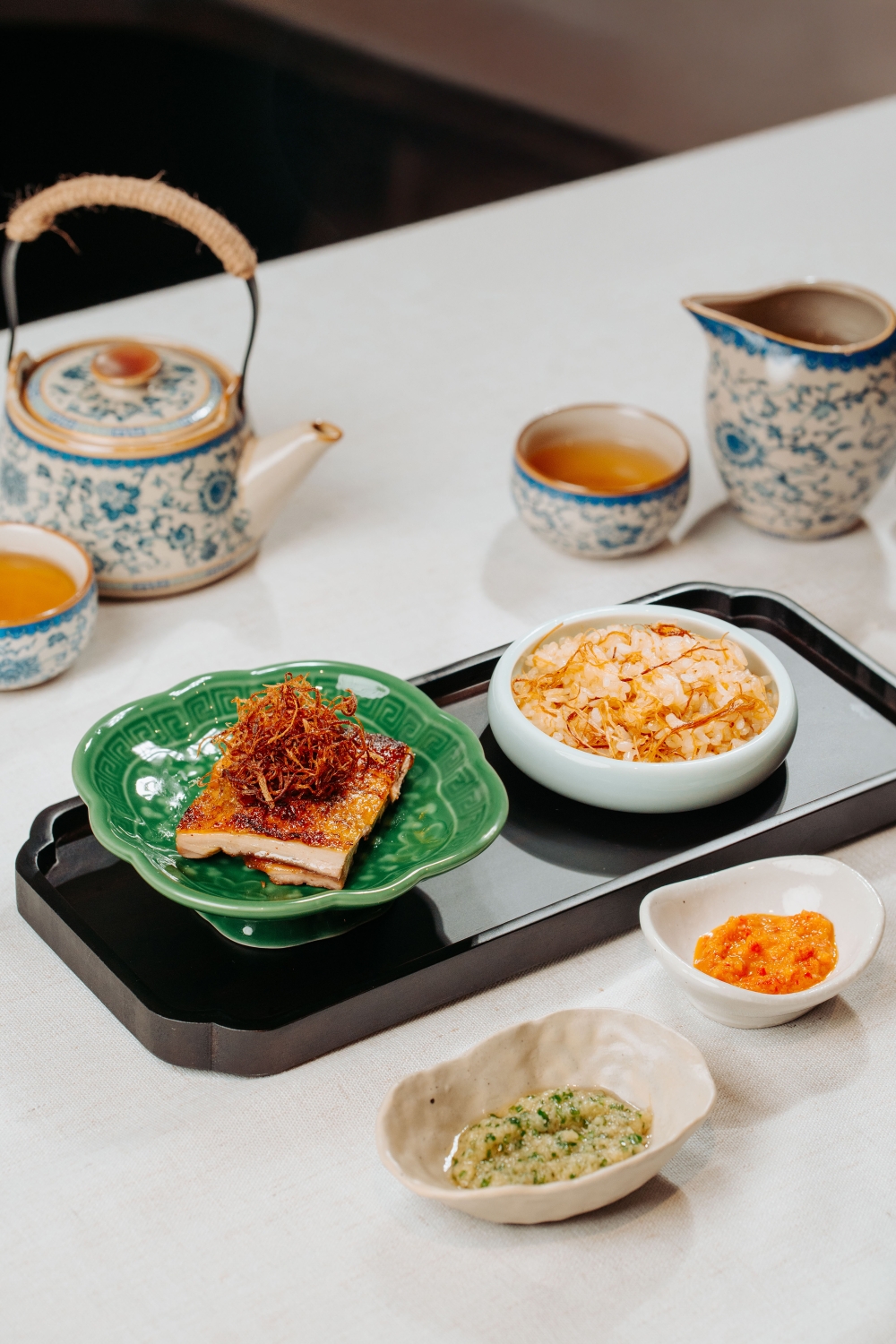
The chicken rice course at Jie. — Picture courtesy of Restaurant Jie
While some techniques like making lobster gelée now come naturally — having produced 40 portions a night at Robuchon — mastering certain Chinese ingredients has required a different kind of learning curve.
“Before it reaches the customer, we do many, many trials of research and development,” Chan said. “It can take almost half a year for one dish.”
The menu at Jie changes every three months, which means Foong and Chan are developing new ideas almost daily. “It’s our daily routine – when we’re eating, whatever we’re doing, anything can become an idea,” Chan said.
Many of those ideas come from simple comfort food. The centrepiece of the season two menu is none other than the working man’s champion: chicken rice.
“It’s a free-range chicken that we dry-age for three to four days, then we grill it over charcoal. The skin ends up very different from your typical ‘roast chicken’ outside,” Foong explained.
“It has a smoky aroma, and if you pay attention, the skin is a little bit like the skin on roast pork. It’s very crunchy, breaks easily.”
“A lot of people say, ‘Why am I paying so much for chicken rice?’ but once they try it, it’s a different story,” Foong remarked. “In the end, people kept asking for refills.”
Foong is now working on something inspired by coconut chicken soup. “We haven’t run any trials yet; we also just learned some dim sum techniques recently, so we’re going to try and have dim sum in our next menu or the one after that.”
Recognition matters to all restaurants, but in the age of paid influencer posts and agency-managed buzz, Jie seems to have found something rarer: organic, word-of-mouth momentum.
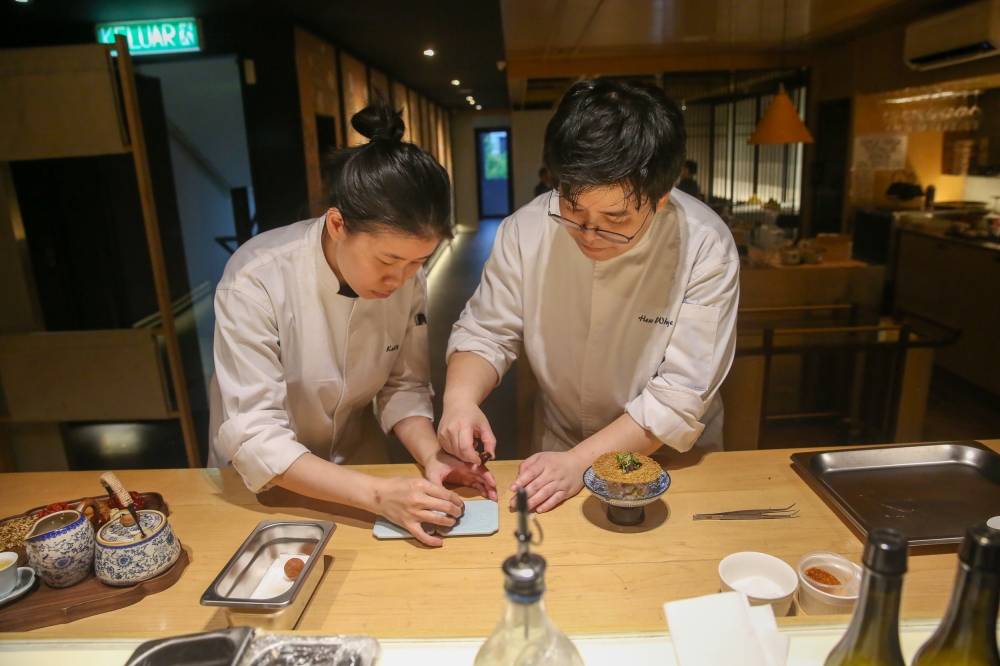
Foong and Chan emphasise that how the customer feels is ultimately the most important part of a restaurant experience. — Picture by Choo Choy May
One man’s pontification is another’s endorsement. Chan described Teoh as iconic; Foong said she was “touched” by his feedback.
“He’s trying to bring up Malaysian ingredients and Malaysian culture, which is what you see at Dewakan. We’re trying to bring up Chinese culture in Malaysia, so the starting point is similar. We’re both trying to bring up Malaysian culture.”
For Foong and Chan, though, what matters most is how the customer feels dining at Jie.
“As humbly as we can, we want the customer to feel that our food is sincere. I think that is the most important thing,” Chan said.
Foong echoes that sentiment when it comes to defining success. “I think most people immediately think of Michelin or other awards, right? Of course, we’re happy if we get it, but it is not our goal. My goal is for the guest to leave happy, satisfied. The rest is a bonus.”
Restaurant Jie73-M, Jalan Setia Bakti Bukit Damansara, Kuala Lumpur
Open Tuesday to Saturday, 6-11pm
Tel: 012-325 0885Instagram: @restaurantjie.kl
* Follow us on Instagram @eatdrinkmm for more food gems.
* Follow Ethan Lau on Instagram @eatenlau for more musings on food and mildly self-deprecating attempts at humour.


